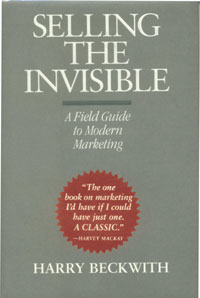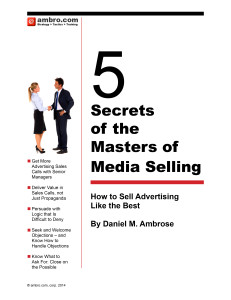Selling the Invisible
A Field Guide to Modern Marketing
by Harry Beckwith
This little book will help you sell advertising more than any other currently on the market. Advertisers don’t want to own the spots, or the banners or the pages we might sell them. They want to own the results of the advertising expenditure. And because the results are sometimes not immediate, sometimes not close-enough to the point of sale, or often obscured by other business factors, they are frequently invisible.
Selling the Invisible is ostensibly about the marketing of services such as banking or accounting or healthcare. Like advertising, each of these has ‘results,’ but consumers of neither accounting nor banking nor healthcare (nor purchasers of advertising) can discern whether they received good or mediocre or even bad service in most cases. The invisible nature of these services is quite similar to advertising media itself. Despite the measurement of media being a billion-dollar business, marketers are no more certain today than they were two decades ago that they got the best media plan they could for the money.
The book is made up of many one and two-page sections, way too short to be called chapters, but they are just the right length for an ADD ad sales person! Dozens of sections relate to the marketing and sales of advertising.
The most powerful idea that pervades the book is the doubt that haunts customers. All advertising sales people, sales managers and marketers in the support of advertising sales should take to heart the doubt that plagues advertising media decision makers and their minions in the advertising purchase process.
The three little sections that struck home most powerfully for me are “One story beats a dozen adjectives,” where we are reminded that telling a client how great our media property is will never be as powerful as telling them a story about another client who was successful with us. Second was “Yeah but I Like It” wherein Beckwith discusses the irrational makes its way into purchase decisions. And finally there is “Thanks” reminds us that we may say to a client “I can’t thank you enough,” but we don’t act on it. And it ties into Ambrose’s third principle of advertising sales; to wit: The client is more open to hearing you when you are thanking them, than any other time in the sales process. Use that time to sell, by reminding your client why they made a smart decision some weeks or months ago.
Finally, the most valuable page of the book may well be the story from the section “Advertising is Publicity” that will help you handle advertiser demands for editorial coverage…indeed you may want to buy a copy to sent it to your problem client.

